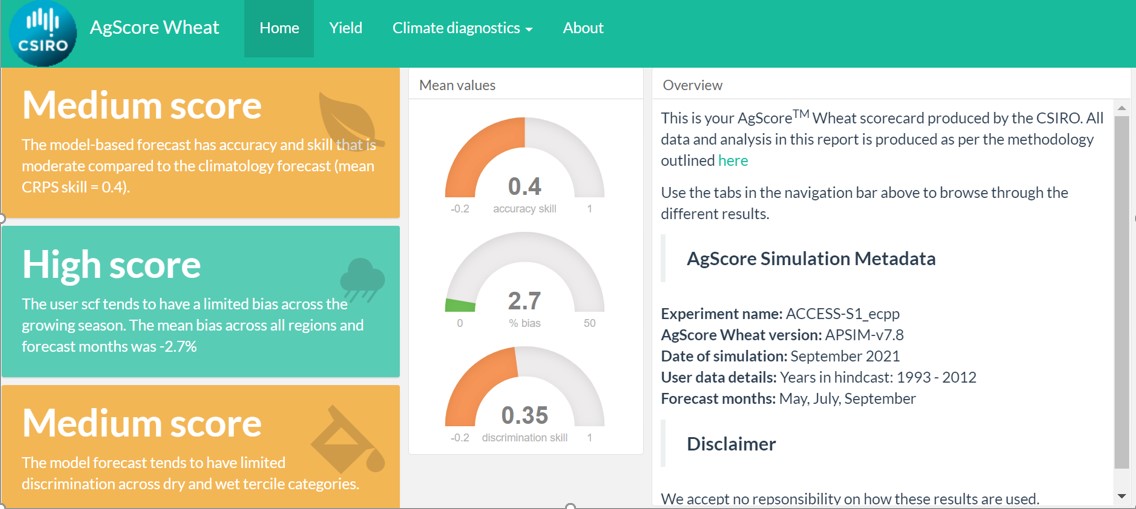What climate model 'problem' does AgScore™ solve?
Might it rain tonight? What's the temperature tomorrow, or the day after?
 Most of us have access to weather forecasts like this that only look seven days into the future.
Most of us have access to weather forecasts like this that only look seven days into the future.
But farmers could really benefit from having accurate and reliable climate forecasts that look into a whole growing season. It could help with farm preparedness and resilience, allowing farmers to better manage their business and reduce climate-related risks.
The most widely used seasonal forecasts are produced by the Bureau of Meteorology and several international agencies such as the UK Met Office. These longer forecasts use complex numerical models of the earth’s atmospheric and oceanic processes.
A new way of climate forecasting is to combine multiple seasonal climate models from around the world but so far they've still had limited success at helping a farmer's decision or location.
If climate modellers had a way of evaluating their seasonal climate forecasts that were more agriculture-focussed, they could better target future research towards improving forecasts for agriculture.
How can AgScore™ help agricultural industries?
Our AgScore™ tool tests the performance of different seasonal climate models to see how they might benefit agriculture.
For instance, rather than just answering 'how well does this climate model predict rainfall?', AgScore™ can answer 'how well does this climate model predict wheat yield, or pasture growth?'
People using the AgScore score cards don't need prior expertise in agricultural modelling and high-performance computing.
AgScore™ hopes to change investment and research in seasonal climate models by providing agriculture-focussed forecast assessments that are timely and comparable. It will also aid communicators and service providers by identifying which models they may consider useful and of sufficient quality to include in their seasonal outlooks.
What climate model 'problem' does AgScore™ solve?
Might it rain tonight? What's the temperature tomorrow, or the day after?
Most of us have access to weather forecasts like this that only look seven days into the future.
But farmers could really benefit from having accurate and reliable climate forecasts that look into a whole growing season. It could help with farm preparedness and resilience, allowing farmers to better manage their business and reduce climate-related risks.
The most widely used seasonal forecasts are produced by the Bureau of Meteorology and several international agencies such as the UK Met Office. These longer forecasts use complex numerical models of the earth’s atmospheric and oceanic processes.
A new way of climate forecasting is to combine multiple seasonal climate models from around the world but so far they've still had limited success at helping a farmer's decision or location.
If climate modellers had a way of evaluating their seasonal climate forecasts that were more agriculture-focussed, they could better target future research towards improving forecasts for agriculture.
How can AgScore™ help agricultural industries?
Our AgScore™ tool tests the performance of different seasonal climate models to see how they might benefit agriculture.
For instance, rather than just answering 'how well does this climate model predict rainfall?', AgScore™ can answer 'how well does this climate model predict wheat yield, or pasture growth?'
People using the AgScore score cards don't need prior expertise in agricultural modelling and high-performance computing.
AgScore™ hopes to change investment and research in seasonal climate models by providing agriculture-focussed forecast assessments that are timely and comparable. It will also aid communicators and service providers by identifying which models they may consider useful and of sufficient quality to include in their seasonal outlooks.
